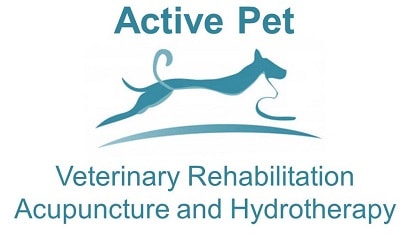Radial Pressure Shockwave Treatment for Dogs and Cats
 The use of radial shockwave or Radial Pressure Wave (RPW) has been successfully used to treat conditions such as osteoarthritis, lumbosacral disease and tendon or ligament injuries in dogs, cats and horses. Therapeutic shockwaves were introduced as a medical treatment for eliminating kidney stones (lithotripsy) without causing skin injury, over 20 years ago. Some of the side effects discovered while using this treatment, were bone healing and accelerated tissue healing on areas that were treated.
The use of radial shockwave or Radial Pressure Wave (RPW) has been successfully used to treat conditions such as osteoarthritis, lumbosacral disease and tendon or ligament injuries in dogs, cats and horses. Therapeutic shockwaves were introduced as a medical treatment for eliminating kidney stones (lithotripsy) without causing skin injury, over 20 years ago. Some of the side effects discovered while using this treatment, were bone healing and accelerated tissue healing on areas that were treated.
For those of you who have horses you may have come across extracorporeal shockwave therapy (ESWT). This treatment has been used for many years in the equine world for treating tendon and ligament injuries with great success. Some vet clinics have started offering ESWT to dogs as well as horses but the downside is that it is painful and so the patient needs to be sedated or anaesthetised.
ESWT uses focused shockwaves that can be produced by one of three ways; spark discharge, piezoelectric or electromagnetic means. Radial Pressure Waves probably shouldn’t be technically termed shockwaves as they are generated pneumatically and the wave spreads outwards rather than being focussed. If you would like to delve into a more scientific explanation about how shockwaves work then click here.
Active Pet is the first vet clinic in the UK to be using the Intelect Radial Pressure Wave Unit for pets. Physiotherapists who work for many of the top sports clubs are using these machines on their players, so you can be assured that your pet is getting first class treatment!
The treatment is a little noisy so we do need to get your pet used to the sound first but most pets normally settle and don’t mind the noise at all. We treat over the problem area making sure that there are no contraindications to doing so first. For most conditions at least three sessions will be required 7-14 days apart. The only side effect to the treatment is there may be an exaggeration of the symptoms the next day and we would expect to see an improvement in signs and healing one to four weeks after treatment. Most pets will see an improvement or resolution of their symptoms that lasts several months and at this time the treatment can be repeated.
In the clinic we are mostly using the machine to treat pets with tendon and ligament problems, lumbo-sacral disease and osteoarthritis either due to wear and tear or as a result of elbow disease/dysplasia, hip dysplasia or cruciate rupture. However it does have many more uses so do contact us if you would like to find out more or whether this treatment will be suitable for your pet’s condition.
Further reading:
- Radial shock wave therapy in dogs with hip osteoarthritis – http://www.strattner.com.br/doc/artigos/A_Souza_RSWT_In_dogs_with_hip_ostheoarthritis.pdf
- Effects of radial shockwave therapy on the limb function of dogs with hip osteoarthritis – https://www.ncbi.nlm.nih.gov/pubmed/17545646
- Shockwave therapy as a treatment option – http://www.pulsevet.com/wp-content/uploads/ShockwaveforDogs_CliniciansBrief.pdf
- Shock Wave Therapy For Dogs With Arthritis – http://www.whole-dog-journal.com/issues/11_5/features/Canine-Arthritis-Pain-Relief_16028-1.html


